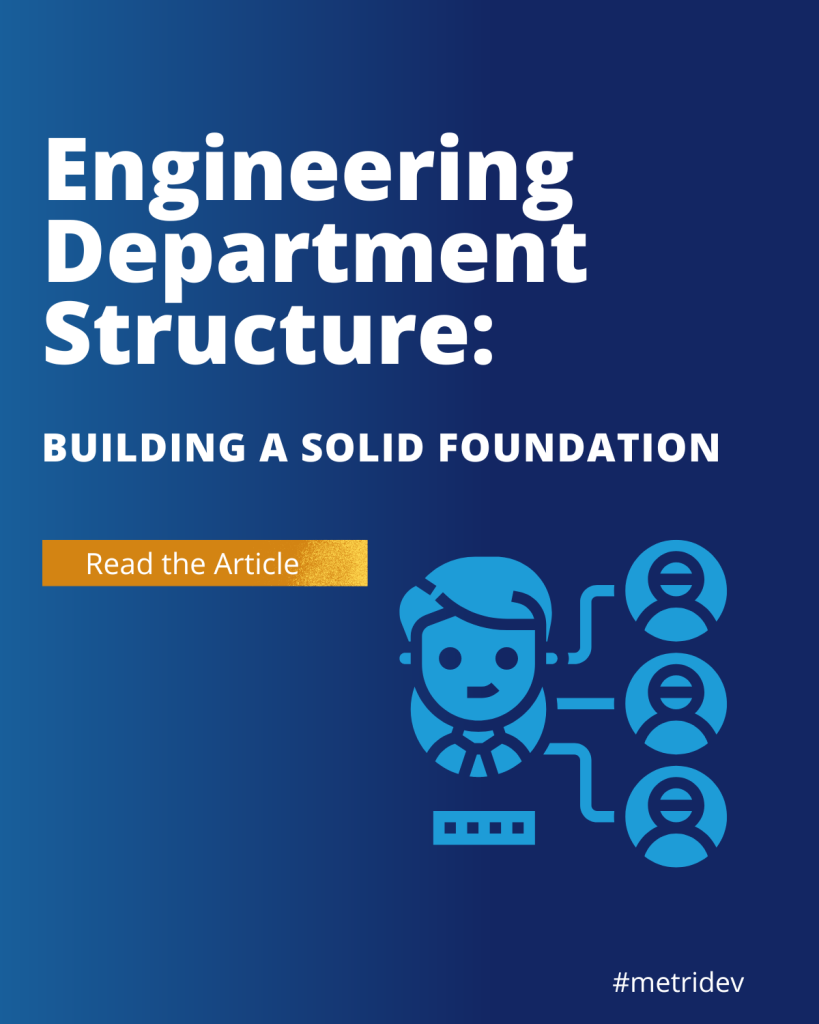Introduction
Effective decision-making is a crucial skill in both personal and professional settings. However, making consistent and well-informed decisions can be challenging, especially in complex or high-stakes situations. This is where a decision-making framework can be invaluable.
A decision-making framework is a structured approach that helps individuals or organizations navigate the decision-making process systematically, ensuring that key factors are considered and that decisions are made with clarity and consistency.
What is a Decision-Making Framework?
A decision-making framework is a systematic process that guides individuals or organizations through the steps of making decisions. It provides a structured approach to identifying the problem, gathering information, evaluating alternatives, and selecting the best course of action. The framework ensures that decision-makers make consistent, logical, and well-informed decisions, reducing the risk of bias, oversight, or poor judgment.
Importance of a Decision-Making Framework
Using a decision-making framework offers several key benefits. It ensures consistency by basing decisions on a set criteria, reducing the risk of bias. The framework provides clarity with a clear, structured approach, making the rationale behind decisions easier to understand. It also improves decision quality by guiding the decision-maker through a comprehensive process that considers all relevant factors. Additionally, it enhances accountability with a documented process that can be reviewed and evaluated, increasing transparency. Lastly, a well-designed framework boosts efficiency by streamlining the decision-making process, saving time and resources.
Common Challenges in Decision Making
Despite the benefits of using a decision-making framework, individuals and organizations face several common challenges when making decisions. First, cognitive biases, such as confirmation bias or the sunk-cost fallacy, can influence decision-making and lead to suboptimal choices. Moreover, decisions are often made with limited or imperfect information, increasing the risk of poor outcomes. Additionally, emotions, personal preferences, and other subjective factors can cloud judgment and lead to irrational decision-making. Furthermore, the need to make decisions quickly can limit the ability to thoroughly analyze all available information and consider alternatives. Finally, balancing multiple, potentially competing priorities can make it challenging to determine the best course of action. Despite these challenges, a well-designed decision-making framework can help mitigate these issues and improve the decision-making process.
How to Create a Decision-Making Framework?
Developing a decision-making framework involves several key steps:
- Define the Decision-Making Process: Identify the specific steps involved in the decision-making process. For instance, problem definition, information gathering, alternative evaluation, and decision selection.
- Establish Criteria: Determine the key factors or criteria that will be used to evaluate and compare different alternatives. These may include cost, risk, feasibility, alignment with organizational goals, and potential impact.
- Assign Weights: Assign relative weights to the different criteria, based on their importance and relevance to the specific decision at hand.
- Gather and Analyze Information: Collect all relevant information, data, and input from stakeholders to inform the decision-making process.
- Evaluate Alternatives: Systematically evaluate each alternative against the established criteria. Use the assigned weights to determine the best course of action.
- Document the Process: Maintain a clear record of the decision-making process. Include the rationale for the final decision, to ensure transparency and accountability.
- Continuously Improve: Regularly review and refine the decision-making framework to incorporate lessons learned and adapt to changing circumstances.
By following these steps, organizations and individuals create a robust and effective decision-making framework that they can apply consistently across various decisions.

Key Elements of a Decision-Making Framework
A comprehensive decision-making framework typically includes several key elements. First, it involves clearly defining the problem or decision to be made, including desired outcomes and any constraints or limitations. Next, it requires collecting and analyzing all relevant data, stakeholder input, and external information to inform the decision-making process. Then, multiple possible alternatives or courses of action are identified and systematically evaluated. Additionally, a set of criteria is established to evaluate the alternatives, with weights assigned to each criterion based on its importance. Following this, decision-makers select the alternative that best aligns with the established criteria and objectives.
Afterward, a plan is developed for implementing the chosen decision and monitoring its outcomes to ensure it is achieving the desired results. Finally, the framework includes regularly reviewing and refining the decision-making process to incorporate lessons learned and adapt to changing circumstances. By incorporating these key elements, a decision-making framework becomes more effective and adaptable.
What are the Four Steps of the Decision-Making Framework?
Many decision-making frameworks follow a four-step process:
- Define the Problem: Clearly identify the decision to be made, the desired outcomes, and any constraints or limitations.
- Gather Information: Collect and analyze all relevant data, stakeholder input, and external information to inform the decision-making process.
- Generate Alternatives: Identify and evaluate multiple possible courses of action or alternatives.
- Select the Best Alternative: Evaluate the alternatives based on the established criteria and select the option that best aligns with the decision-making objectives.
This four-step process structures the decision-making approach, ensuring consideration of all relevant factors and resulting in well-informed and consistent decisions.
Tools and Resources for Decision Making
There are a variety of tools and resources available to support effective decision-making, including:
- Decision-Making Software: Tools like decision trees, decision matrices, and multi-criteria decision analysis (MCDA) software. These can help to structure and streamline the decision-making process.
- Brainstorming and Ideation Techniques: Techniques like mind mapping, the Six Thinking Hats method, and the Delphi method. These can help to generate and evaluate a diverse range of alternatives.
- Data Analysis Tools: Spreadsheet software, data visualization tools, and business intelligence platforms. These can help to gather, analyze, and interpret the data needed to inform decision-making.
- Collaboration and Communication Tools: Online collaboration platforms, video conferencing tools, and project management software. These can facilitate the decision-making process by enabling effective communication and coordination among stakeholders.
- Decision-Making Frameworks: Established frameworks like the OODA (Observe, Orient, Decide, Act) loop, the Cynefin framework, and the Kepner-Tregoe decision-making process. These can provide a structured approach to decision-making.
- Training and Education: Workshops, online courses, and professional development programs. These can help individuals and teams develop the skills and knowledge needed to effectively implement a decision-making framework.
By leveraging these tools and resources, organizations and individuals can enhance their decision-making capabilities and improve the consistency and quality of their decisions.
What is a Decision-Making Model in Management?
A decision-making model in management structures the decision-making process, tailoring it specifically for organizational or business settings. These models help managers and leaders navigate complex decisions by considering factors such as organizational goals, stakeholder interests, and resource constraints.
Some common decision-making models used in management include:
- Rational Decision-Making Model: This model assumes that decision-makers have complete information and can objectively evaluate all available alternatives to select the optimal choice.
- Bounded Rationality Model: This model recognizes that decision-makers often have limited information and cognitive resources. Also, that they must make decisions based on satisficing (finding a solution that is good enough) rather than optimization.
- Garbage Can Model: This model acknowledges that decision-making in organizations can be chaotic and unpredictable, with problems, solutions, and decision-makers coming together in a seemingly random way.
- Incremental Decision-Making Model: This model suggests that decision-makers often make small, incremental changes to existing policies or practices rather than undertaking major, transformative decisions.
- Intuitive Decision-Making Model: This model recognizes that experienced decision-makers often rely on their intuition and past experiences to make decisions, rather than strictly following a rational process.
By understanding and applying these decision-making models, managers can develop a more structured and consistent approach to decision-making within their organizations.
Benefits of Using a Decision-Making Framework
The use of a decision-making framework can provide several key benefits. Firstly, it improves decision quality by guiding decision-makers through a comprehensive process that identifies and considers all relevant factors, leading to more informed and higher-quality decisions. Additionally, it increases consistency by ensuring that decisions are made based on a consistent set of criteria, thus reducing the risk of inconsistent or biased decision-making. Furthermore, it enhances transparency, as the documented decision-making process improves accountability and makes it easier to understand the rationale behind a decision.
Moreover, a well-designed framework can streamline the decision-making process, saving time and resources, and reducing cognitive biases by providing a structured approach. This structured approach helps mitigate the impact of cognitive biases that can influence decision-making. Additionally, a consistent decision-making framework ensures organizational alignment, helping decisions align with the organization’s goals, values, and strategic priorities. Finally, regular review and refinement of the decision-making framework lead to continuous improvement and better decision-making over time. By leveraging these benefits, organizations and individuals can enhance their decision-making capabilities and improve the consistency and quality of their decisions.
Pitfalls to Avoid When Using a Decision-Making Framework
While a decision-making framework can be a powerful tool, there are potential pitfalls to be aware of. First, oversimplification can occur when trying to fit complex decisions into a rigid framework, leading to the overlooking of important nuances. Additionally, overreliance on quantitative factors, such as cost, at the expense of qualitative factors, like stakeholder preferences, can result in suboptimal decisions. Moreover, a lack of flexibility in the framework can limit the decision-maker’s ability to respond to new information or evolving conditions.
Insufficient information gathering can also lead to decisions based on incomplete or biased data. Furthermore, neglecting to involve key stakeholders can result in decisions that fail to address their needs. Overconfidence in the framework, without critically evaluating its limitations, can lead to blind spots and poor decisions. Lastly, failing to regularly review and refine the framework can make it outdated or ineffective over time. To avoid these pitfalls, decision-makers should balance the structure and consistency of a framework with flexibility and critical thinking.
Conclusion: How a Decision-Making Framework Can Improve Consistency in Decision Making
In conclusion, a well-designed decision-making framework can be a powerful tool for improving the consistency and quality of decisions, both in personal and professional settings. By providing a structured approach to the decision-making process, a framework can help to:
- Mitigate the impact of cognitive biases and emotional factors that can influence decision-making
- Ensure that all relevant information and alternatives are thoroughly considered
- Establish a consistent set of criteria and weighting for evaluating options
- Enhance transparency and accountability in the decision-making process
- Streamline the decision-making process and save time and resources
By implementing a decision-making framework and continuously refining it to meet evolving needs, individuals and organizations can improve the consistency and quality of their decisions, leading to better outcomes and greater success.
To learn more about how benefit your organization, read our article Unproductive Meeting: Maximizing Efficiency in the Workplace.









Leave a Reply